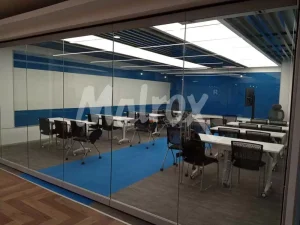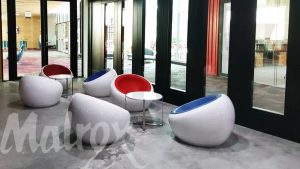Space—it’s the final frontier not only in the cosmos but also in the modern home. How does one make the most of their living quarters when the trend is toward smaller footprints? Enter internal folding walls, a dynamic solution that brings adaptability and style to today’s residential architecture.
Introduction
Imagine being able to reconfigure your home’s layout at a moment’s notice. Internal folding walls make this possible, revolutionizing how we think about our living spaces. Gone are the days when walls were merely static dividers. They can fold, retract, and transform a room in seconds.
Benefits of Internal Folding Walls
Space Optimization
Internal folding walls allow you to open up or divide spaces as needed, meaning you can tailor your home to suit different occasions. Whether creating a cosy nook or making room for a large gathering, these walls enable unparalleled space utilization.
Versatility and Flexibility
The very essence of these walls lies in their flexibility. Need an impromptu office for remote work or an exercise area? A folding wall can quickly turn a living room or bedroom into a multifunctional space, adapting your home to your lifestyle at any given moment.
Enhanced Natural Light
When retracted, internal folding walls permit an effortless flow of natural light, lending a sense of openness and vitality. Conversely, they can easily be closed to create more intimate, private areas.
Soundproofing and Privacy
Many internal folding walls come with soundproofing options, allowing you to minimize noise and distractions. They provide privacy when required without the need for permanent partitioning.
Types of Internal Folding Walls
Sliding Folding Walls
These operate on tracks and can slide and fold simultaneously, offering a smooth transition between spaces and neat storage when opened.
Accordion Folding Walls
Resembling the musical instrument, accordion walls fold in a zigzag pattern, making them easy to operate and visually interesting.
Bi-fold Doors
A popular variation, bi-fold doors are hinged and fold back in sections, ideal for connecting rooms or opening up to outdoor areas.
Considerations for Installation
Structural Requirements
Before installation, it’s important to consult a structural engineer to ensure your home can accommodate these walls without affecting its integrity.
Material Options
From wood and glass to composites, the materials chosen for your folding walls should sync with both functionality and the overall design aesthetic of your home.
Design and Aesthetic Integration
Internal folding walls come in various designs and finishes, which can complement or redefine your home’s interior style.
Case Studies and Examples
Throughout this post, inspirational case studies highlight homes that have cleverly embraced internal folding walls for various uses—from expanding dining areas to creating temporary guest bedrooms.
Maintenance and Care
Regular maintenance is key to keeping your internal folding walls operating smoothly. This includes cleaning tracks, lubricating hinges, and checking for any wear or adjustments needed over time.
Conclusion
Internal folding walls represent a smart investment in the versatility and adaptability of your living space. They are more than a functional element; they are a design statement that signifies a modern and dynamic approach to home living.
As we’ve navigated the ins and outs of internal folding walls, remembering their diverse benefits—from space maximization to aesthetic fluidity—it’s clear that they can reshape rooms and lifestyles. It’s time to think beyond the traditional confines of walls and consider their limitless potential when designed to bend, fold, and serve our needs within a modern home.
Are you looking to redesign your space? It’s time to think inside the box—quite literally—and let internal folding walls unlock new dimensions in your home. With a push or pull, you can redefine your home to be as versatile, efficient, and stylish as you desire.







